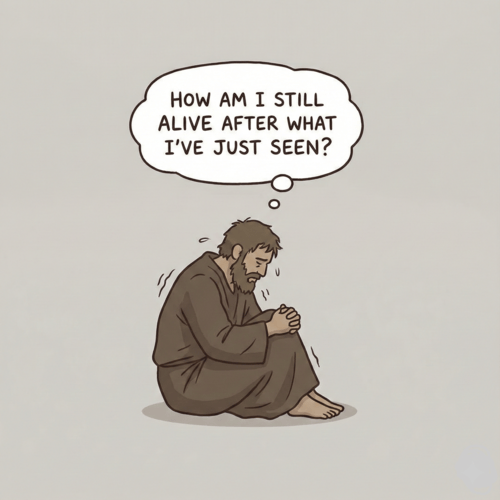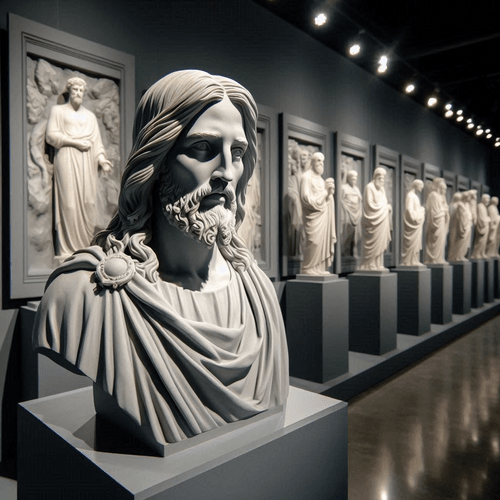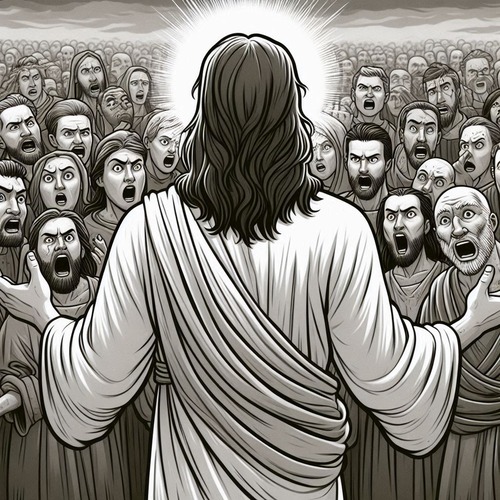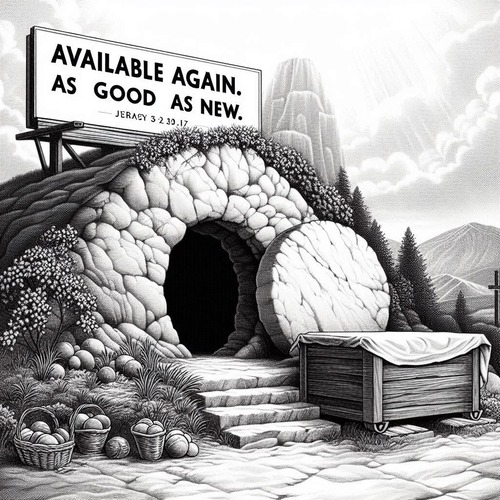Seeking the Historical Jesus: Fresh Insights and Enduring Truths
The quest to understand Jesus as a historical figure has always captivated scholars. This pursuit—often called “the quest for the historical Jesus”—continues to evolve as new archaeological discoveries, textual insights, and methodological approaches emerge. For believers, these developments need not threaten faith but can actually deepen our understanding of the Saviour who entered human history at a specific time and place. Recent scholarship has yielded fresh insights that, rather than undermining traditional faith commitments, often lend them surprising support.
THE CURRENT LANDSCAPE OF HISTORICAL JESUS RESEARCH
Historical Jesus research has gone through several phases since Albert Schweitzer’s groundbreaking work in the early 20th century. The highly sceptical approach of the Jesus Seminar in the 1980s and 1990s, which questioned much of the Gospel accounts, has given way to more nuanced scholarship that takes the historical reliability of the texts more seriously.
Scholars such as NT Wright, Craig Keener, and Richard Bauckham have made compelling cases for the historical plausibility of the Gospel narratives. Even scholars from outside faith traditions acknowledge there is far more historical core in the Gospel accounts than previous generations of critical scholars did. This shift represents a growing recognition that the extreme scepticism of earlier critical scholarship was often driven more by philosophical assumptions than by historical evidence.
ARCHAEOLOGICAL DISCOVERIES CONFIRMING GOSPEL RELIABILITY
The last few decades have seen remarkable archaeological discoveries that corroborate details in the Gospel narratives.
- The discovery of the Caiaphas ossuary in 1990 provided physical evidence of the high priest who, according to the Gospels, played a crucial role in Jesus’ trial.
- The Pilate Stone, discovered in 1961, confirms the existence and position of Pontius Pilate as prefect of Judea during the time of Jesus.
- Recent discoveries at Nazareth have confirmed the existence of this small village in the first century, countering earlier sceptical claims that Nazareth didn’t exist during Jesus’ lifetime.
- Archaeological findings at Magdala, including a first-century synagogue, have provided new insights into the Jewish Galilean context of Jesus’ ministry.
While archaeology cannot “prove” the theological claims of Christianity, it increasingly confirms the biblical writers were accurately describing the world in which Jesus lived.
TEXTUAL AND LITERARY ADVANCEMENTS
Scholarly understanding of how the Gospels were composed has undergone significant revision.
- Eyewitness Testimony: Richard Bauckham’s groundbreaking work demonstrates that the Gospels are closely connected to eyewitness sources—those who walked with Jesus and whose testimony was carefully preserved. This research suggests the Gospel writers had direct access to eyewitnesses or were eyewitnesses themselves.
- Earlier Dating of Texts: While mid-20th century scholarship often placed the Gospels in the late first or early second century, many scholars now accept earlier dating. Mark is frequently dated to the 60s AD, with Matthew and Luke in the 70s or 80s, and John’s Gospel increasingly dated to the 90s rather than later. These earlier dates strengthen the connection between the written accounts and the eyewitnesses who could verify their contents.
- Manuscript Evidence: Textual criticism has yielded important insights through the vast number of early New Testament manuscripts (far exceeding any other ancient text). Over 5,800 Greek manuscripts, some dating to the early second century, allow for a high degree of confidence in the reliability of the text as it has been transmitted.
- Study of Names: Statistical analysis of names in the Gospels reveals they accurately reflect the frequency and distribution of names in first-century Palestine. The Gospels contain the precise proportions of popular Jewish names (like Simon and Mary) that archaeological evidence confirms were common in that specific time and place. This remarkable correspondence would be nearly impossible for later authors writing outside Palestine to fabricate. Learn More:
- Artless Similarities: The Gospels contain numerous casual agreements in details that aren’t theologically significant but reflect authentic shared memories. For example, all four Gospels mention Jesus’ garments being divided at the crucifixion—a minor detail with no theological agenda. These artless similarities suggest the Gospel writers were constrained by actual events rather than creating narratives to serve theological purposes. Check Out Our Post:
- Undesigned Coincidences: The Gospel accounts contain interlocking details where one text inadvertently explains a question raised in another. For instance, John mentions there was grass where the 5,000 were fed, while Mark notes it was spring—when grass would be green in Galilee. These unplanned, interlocking details across accounts suggest independent knowledge of the same real events rather than collusion or copying. Read Our Post:
- Embarrassing Details: The Gospels preserve details that would have been embarrassing for the early church, such as the disciples’ repeated failures, women as the first witnesses to the resurrection (when women’s testimony wasn’t valued legally), and Jesus’ crucifixion (a shameful death). The preservation of these potentially problematic details points to a commitment to accurately recording events rather than creating an idealised narrative.
JESUS WITHIN SECOND TEMPLE JUDAISM
Perhaps the most significant shift in Jesus research has been the recognition of Jesus’ thoroughly Jewish identity and context. Scholars such as EP Sanders, Amy-Jill Levine, and NT Wright have helped us understand Jesus not as standing against Judaism, but as operating within the diverse Jewish world of first-century Palestine.
This “Jewish reclamation” of Jesus helps correct centuries of misunderstanding. Jesus’ teachings on the kingdom of God, His interpretation of Torah, His messianic claims, and His apocalyptic expectations all make most sense when understood within the context of Second Temple Judaism. Far from diminishing Jesus’ uniqueness, this contextual understanding highlights how His message both connected with and transformed Jewish expectations of His day.
THE RESURRECTION: HISTORICAL EVIDENCE AND SCHOLARLY DEBATES
The resurrection remains the central historical claim of Christianity, and scholarly approaches to this event continue to evolve. While naturalistic historians typically exclude the possibility of resurrection a priori, an increasing number of scholars acknowledge the historical puzzles surrounding Jesus’ death and the origins of the Christian movement.
The historical evidence that requires explanation includes the empty tomb (attested in all four Gospels and implicitly in early Christian preaching), the post-resurrection appearances to various individuals and groups (including skeptics like James and enemies like Paul), and the explosive growth of Christianity in the very city where Jesus was executed.
Attempts to explain these phenomena through naturalistic means (theories of hallucination, wrong tomb, legend development, etc.) continue to face significant historical obstacles. While historical methods alone cannot prove a supernatural resurrection, they can and do point to an extraordinary event that transformed the followers of Jesus from fearful deserters to bold proclaimers willing to die for their testimony.
CONCLUSION: SEEKING THE HISTORICAL JESUS
The alleged divide between the “Jesus of history” and the “Christ of faith” has often been overstated. Contemporary scholarship increasingly suggests that the earliest Christian claims about Jesus emerged not from a gradual mythologising process, but from the impact of Jesus Himself and the events surrounding His life, death, and reported resurrection.
The Jesus who walked the dusty roads of first-century Galilee, who taught with wisdom and authority, who died on a Roman cross, and whom his followers proclaimed as risen Lord, stands firmly in history. Our faith is not in a mythical figure or a disembodied set of ethical teachings, but in the One who entered our world, shared our humanity, and transformed history itself through his life, death, and resurrection.
SEEKING THE HISTORICAL JESUS: RELATED FAQs
How has archaeological research supported the historical reliability of the Gospels? Recent archaeological discoveries have repeatedly confirmed details mentioned in the Gospels that were once questioned by sceptics. The discovery of the Pool of Siloam in Jerusalem (mentioned in John 9), the first-century synagogue at Magdala, and evidence of crucifixion practices all align with Gospel accounts. These findings confirm the Gospel writers possessed accurate knowledge of the geography, customs, and historical circumstances of first-century Palestine, suggesting they were either eyewitnesses or had access to reliable eyewitness testimony.
- What have we learned about the dating of the Gospels from recent scholarship? Scholarly consensus has been shifting toward earlier dating of the Gospels than was common in mid-20th century critical scholarship. Many scholars now date Mark to the 60s AD, Matthew and Luke to the 70s-80s AD, and even John is increasingly dated to the 90s rather than the second century. This earlier dating significantly strengthens the connection between the written Gospels and eyewitnesses who were still alive to verify their contents, as it places their composition within the lifetime of Jesus’ disciples and early followers.
- How does the work of Richard Bauckham on eyewitness testimony affect our understanding of the Gospels? Richard Bauckham’s groundbreaking work Jesus and the Eyewitnesses challenges the view the Gospels emerged from anonymous community traditions and instead demonstrates they were based on named eyewitness testimony. He points to features like the preservation of named individuals, the patterns of how names appear across the Gospels, and literary devices that indicate eyewitness sources. This research suggests that the Gospels present eyewitness testimony transmitted according to the standards of their day, rather than being later legendary developments.
What significance do the “undesigned coincidences” between Gospel accounts have for their reliability? “Undesigned coincidences” refer to instances where one Gospel account provides information that unintentionally explains details in another Gospel, suggesting independent knowledge of the same events rather than collusion. For example, John mentions that there was grass where Jesus fed the 5,000, while Mark tells us it was spring (when grass would be green in Galilee). These interlocking details across Gospel accounts that weren’t deliberately coordinated suggest the writers were recording actual events known to them independently, pointing to the historical reliability of their accounts.
- How has research into the oral culture of first-century Judaism influenced our understanding of Gospel transmission? Recent studies of oral tradition in first-century Jewish culture reveal highly developed methods for accurately preserving and transmitting important teachings. Unlike modern assumptions about the “telephone game,” research by scholars like Kenneth Bailey and Birger Gerhardsson shows Jewish communities had formal mechanisms for faithfully preserving a rabbi’s teachings. These findings suggest Jesus’ teachings could have been reliably transmitted orally during the decades before the Gospels were written, under the supervision of the apostles.
- What has textual criticism revealed about the stability of the Gospel texts through history? Modern textual criticism, examining over 5,800 Greek manuscripts of the New Testament (far more than any other ancient document), has demonstrated remarkable stability in the Gospel texts. While variations exist among manuscripts, the vast majority are minor spelling differences or word order changes that don’t affect meaning. This textual stability, coupled with our ability to reconstruct the original text with high confidence, provides strong evidence that the Gospels we read today faithfully represent what the original authors wrote, not later theological developments or corruptions.
How do non-Christian historical sources corroborate elements of the Gospel accounts? Non-Christian sources like Josephus, Tacitus, and the Talmud corroborate key elements of the Gospel narratives, including Jesus’ existence, his reputation as a teacher and wonder-worker, his crucifixion under Pontius Pilate, and the rapid spread of his movement. References to John the Baptist, James (Jesus’ brother), and the persecution of early Christians also align with Gospel accounts. That non-Christian and even hostile sources confirm these basic elements of the Gospel narrative gives us greater confidence in the historical framework within which the more detailed Gospel accounts operate.
SEEKING THE HISTORICAL JESUS: OUR RELATED POSTS
Editor's Pick

The Throne-Room Vision: Who Did Isaiah See?
The scene is unforgettable: Isaiah stands in the temple, and suddenly the veil between heaven and earth tears open. He [...]

The Angel of the Lord: Can We Be Certain It Was Christ All Along?
Throughout the Old Testament, a mysterious figure appears: the Angel of the LORD. He speaks as God, bears God’s name, [...]
SUPPORT US:
Feel the Holy Spirit's gentle nudge to partner with us?
Donate Online:
Account Name: TRUTHS TO DIE FOR FOUNDATION
Account Number: 10243565459
Bank IFSC: IDFB0043391
Bank Name: IDFC FIRST BANK






